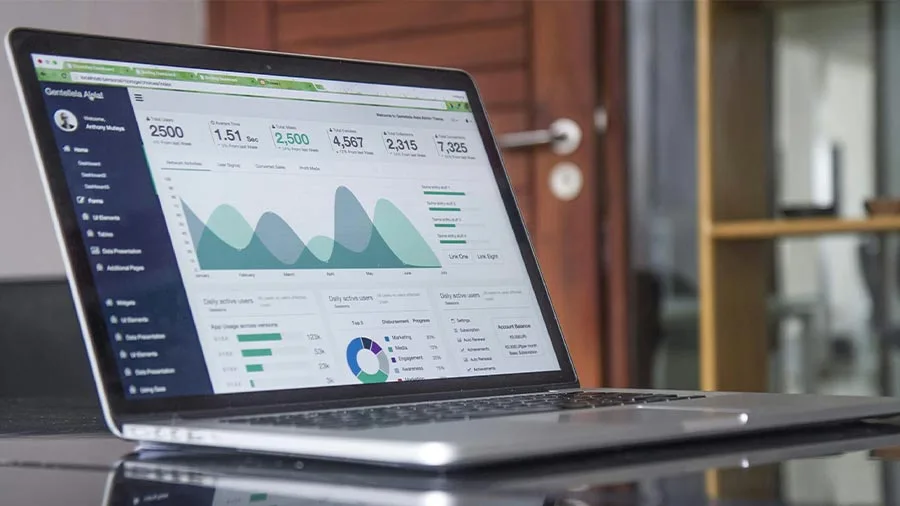Growth marketing goes beyond acquiring new customers—it’s about fostering long-term relationships, enhancing engagement, and maximizing customer lifetime value. Unlike traditional marketing, which prioritizes short-term gains, scalable marketing takes a data-driven approach, continuously experimenting, optimizing, and refining strategies across multiple channels. From A/B testing and SEO to referral programs and personalized campaigns, it blends creativity with analytics to drive sustainable growth. By leveraging customer insights, businesses can craft tailored experiences that boost retention and turn users into brand advocates. Let’s explore how growth marketing transforms customers into loyal supporters who actively contribute to business expansion.
What is Growth Marketing?
The growth marketing definition revolves around a data-driven approach that focuses on rapid and sustainable business expansion through continuous experimentation and optimization. Unlike traditional marketing, which prioritizes brand awareness and long-term positioning for measurable results, using tactics like A/B testing, conversion rate optimization, and performance analytics.
A key aspect of growth marketing strategy is its customer-centric nature. By deeply understanding customer behaviors, preferences, and pain points, marketers craft personalized experiences that drive engagement, retention, and revenue. It incorporates agile methodologies, enabling teams to adapt quickly based on real-time data and feedback.
Additionally, it spans the entire customer journey—from acquisition to retention—ensuring sustained growth. Leveraging digital channels, automation, and behavioral insights, it optimizes marketing campaigns for maximum impact. This approach is widely used in fast-growing startups and tech companies, where innovation, adaptability, and efficiency are crucial for achieving competitive advantages.
Growth Marketing vs Demand Generation
Growth marketing best practices focus on the entire customer journey, optimizing every stage from acquisition to retention. It relies on data-driven experiments, personalization, and rapid iteration to maximize engagement and revenue. A well-structured marketing plan ensures sustainable long-term success, especially for SaaS companies.
On the other hand, demand generation primarily drives awareness and interest in a product or service. It includes tactics like content marketing, SEO, and paid campaigns to attract potential buyers. While demand gen fuels the top of the funnel, marketing and growth strategies ensure leads are nurtured into loyal customers.
For SaaS growth marketing, integrating demand generation with retention-focused tactics is crucial. Businesses need a balance between acquiring new leads and enhancing customer lifetime value. Ultimately, applying growth marketing best practices and leveraging performance marketing ensures that both strategies work together for scalable success.
Why is Growth Marketing Important?
Scalable marketing is vital in B2B, as it drives scalable, data-backed strategies that attract, engage, and convert high-value prospects—accelerating pipeline velocity and long-term revenue through continuous testing and optimization. Below are key points highlighting its importance.
Accelerating Scalable Growth
B2B growth marketing focuses on scaling businesses efficiently by leveraging data-driven strategies. It identifies high-impact tactics to drive pipeline growth. By optimizing lead generation, conversion, and retention strategies, B2B companies can accelerate revenue without excessive spending. Implementing a marketing growth strategy ensures that businesses focus on sustainable expansion while maintaining cost efficiency.
Cost-Effective Demand Generation
Traditional marketing often requires significant investment in broad-reaching campaigns. Growth marketing, however, prioritizes cost-effective tactics like account-based marketing (ABM), content marketing, and LinkedIn networking to engage decision-makers. These approaches help B2B brands generate high-quality leads while maximizing ROI.
Data-Driven Growth Marketing
Marketers track key performance indicators (KPIs) such as customer acquisition cost (CAC), lifetime value (LTV), and conversion rates. Continuous A/B testing and campaign adjustments ensure that marketing efforts remain effective, reducing waste and improving overall efficiency.
Enhancing Customer Retention and Expansion
A strong marketing growth strategy focuses on personalized nurture campaigns, strategic content, and value-driven engagement to keep clients invested in a long-term partnership. Since customer retention is more cost-efficient than acquisition, growth marketing ensures sustained revenue through lasting business relationships.
Building Effective Growth Marketing Campaigns
B2B Growth marketing is a data-driven approach that focuses on continuously experimenting and optimizing every stage of the customer journey. This marketing framework is structured around these key stages:
1. Awareness: The first step in a growth marketing strategy is building and measuring brand awareness. Growth marketers analyze web traffic, search volume trends, and social media engagement while running A/B tests to determine which content and strategies drive the most attention.
2. Acquisition: Once awareness is established, the goal shifts to converting potential customers into leads. This stage involves tactics such as lead magnets, newsletter sign-ups, and free trials. Marketers experiment with landing pages, email campaigns, and chatbot interactions to optimize conversion rates.
3. Activation: After acquiring customers, the focus is on ensuring they engage with the product or service as quickly as possible. This step enhances the user experience and increases the likelihood of continued usage. Growth marketers test onboarding strategies like personalized walkthroughs, video tutorials, and interactive support.
4. Retention: Customer retention is essential for long-term success. Marketing and growth strategies focus on analyzing churn rates and implementing loyalty programs, exclusive content, and customer support improvements to keep users engaged and satisfied.
5. Referral: The final stage focuses on turning happy customers into brand advocates. Referral programs, incentives, and community engagement growth marketing strategies encourage word-of-mouth marketing, which drives sustainable growth.
Examples of Growth Marketing
Here are real-world examples of this booming marketing in action, showcasing how leading brands like Calendly, Slack, and Miro use data-driven strategies to drive engagement, retention, and scalable business growth.
Calendly: Product-Led Virality
Calendly thrives on a freemium model and inherent virality. Every time a user shares a scheduling link, they introduce the platform to a new audience. This organic exposure creates a growth loop, driving adoption without aggressive sales efforts. Its ease of use encourages prospects to try it, fueling ongoing growth.
Slack: Community-Driven Growth
Slack leverages user engagement and community-building to drive product adoption. With features like organized channels, searchable archives, and third-party integrations, Slack eliminates email clutter and enhances team collaboration. By fostering a vibrant user community through online forums, events, and social media, Slack ensures continuous product awareness and advocacy.
Miro: Content-Driven Expansion
Miro blends product-led growth with educational content marketing. It provides pre-built templates, seamless integrations, and interactive webinars to showcase its value. By offering resources that cater to various industries and workflows, Miro effectively nurtures users, driving retention and expansion within organizations.
Final Thoughts
Growth marketing is a powerful strategy that goes beyond traditional marketing by continuously optimizing the customer journey. By leveraging data, experimentation, and automation, businesses can drive sustainable growth, improve retention, and maximize customer lifetime value. Whether through personalized engagement, referral programs, or data-driven decision-making, and ensures long-term success.
For B2B companies, it provides a scalable and cost-effective approach to demand generation, enhancing brand loyalty while driving revenue. With a strong focus on customer-centric strategies, businesses can create meaningful relationships that fuel expansion.




